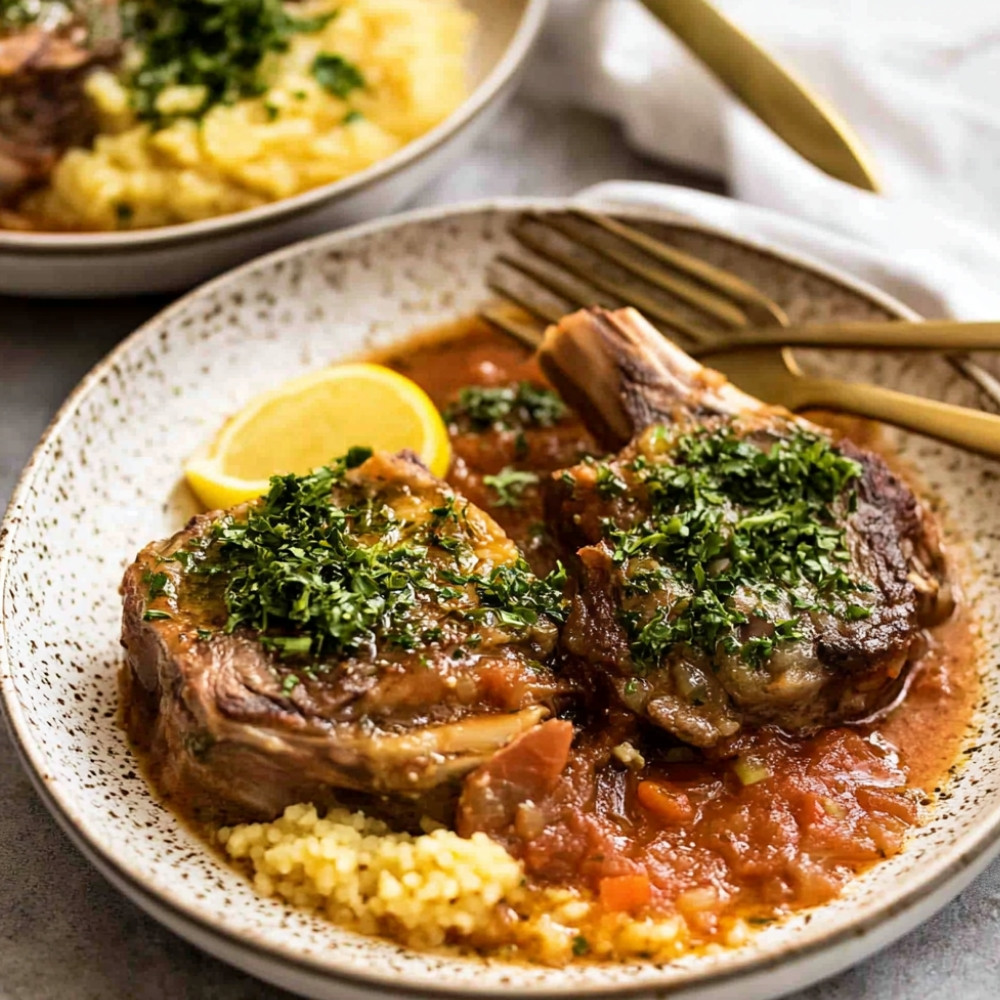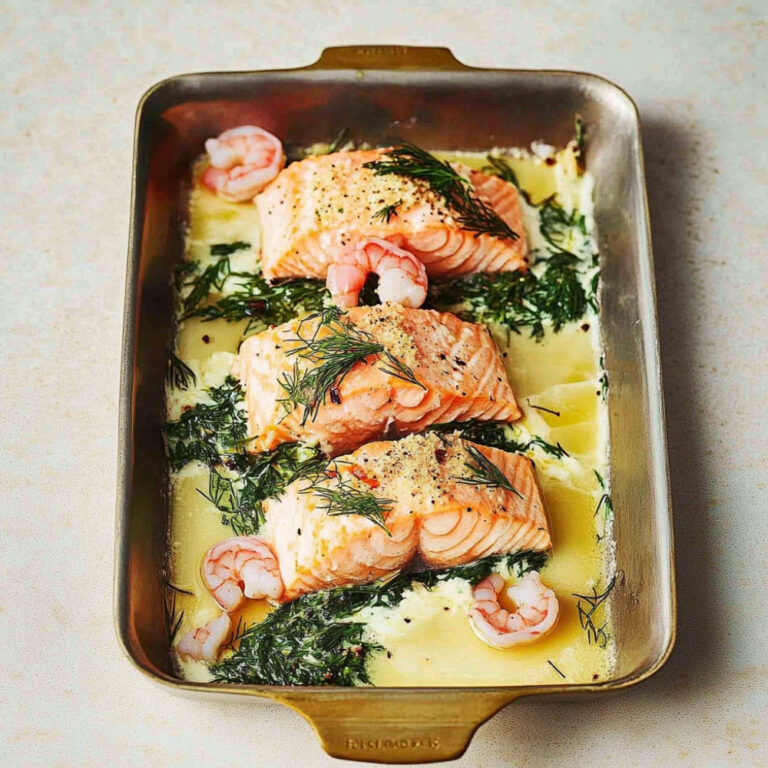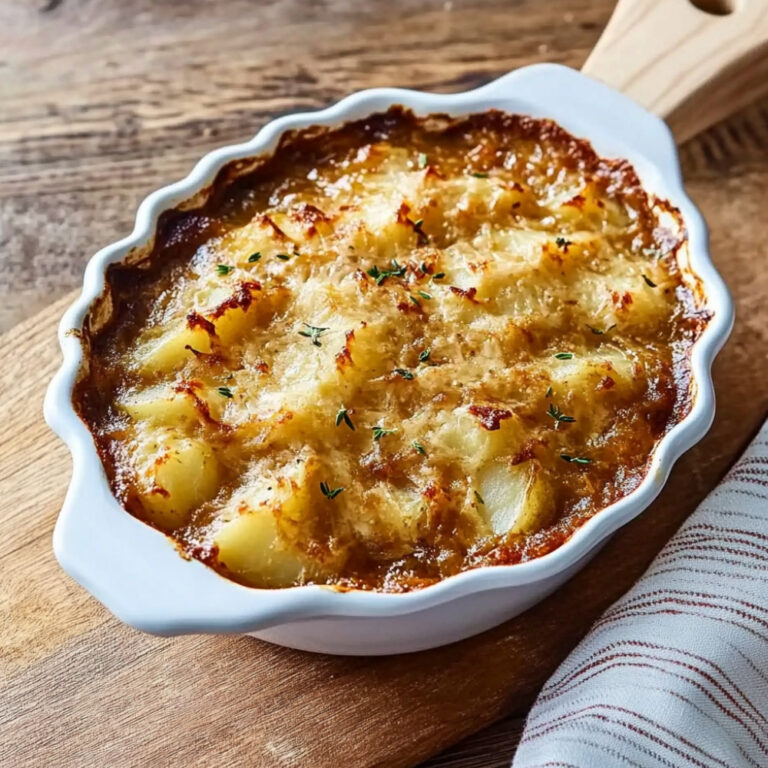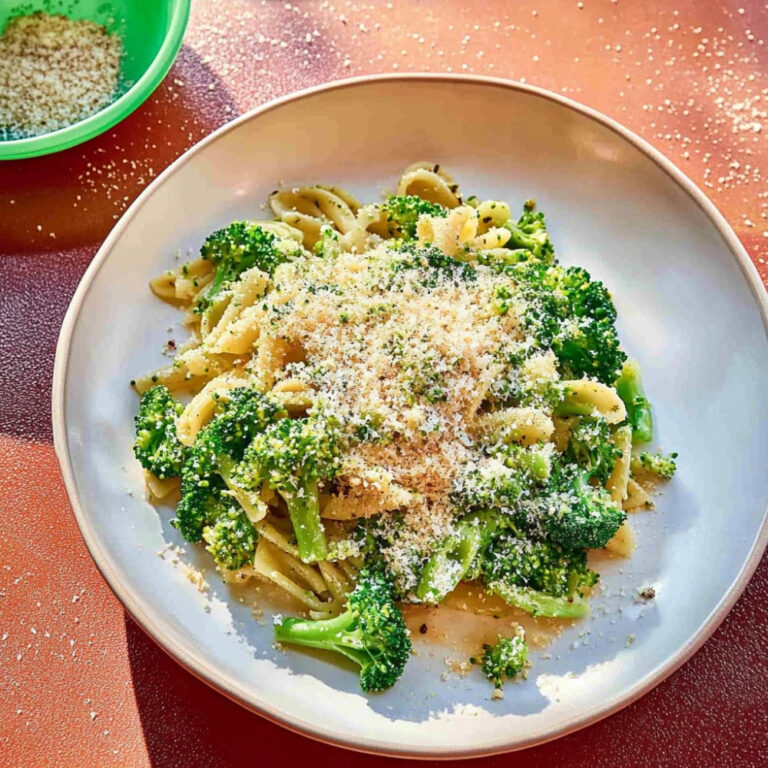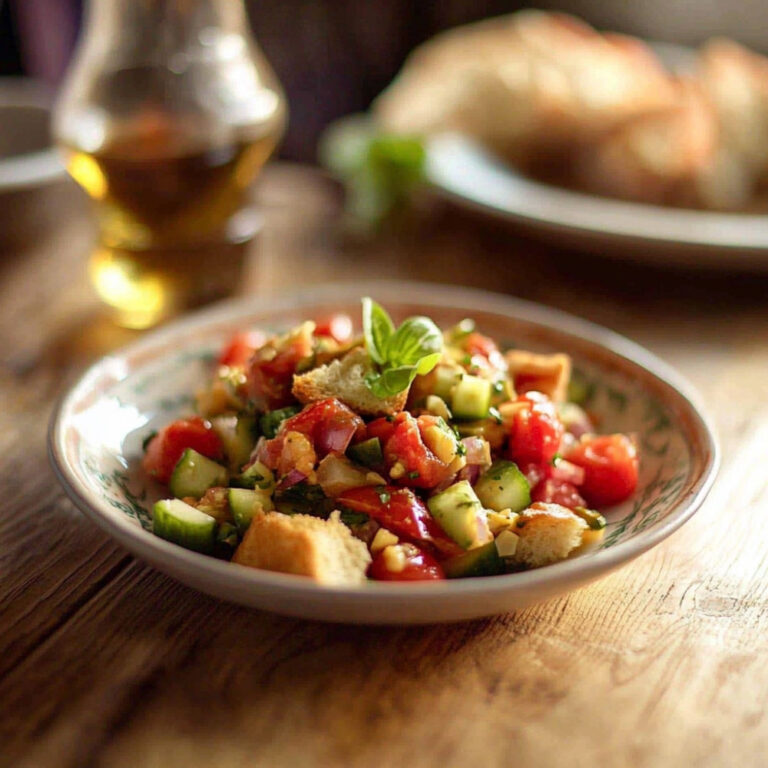Savory Osso Buco: A Classic Italian Comfort Dish
Oh boy, where do I even start with this Savory Osso Buco? It’s like a warm hug on a plate—really rich and comforting. Picture this: veal shanks, braised slowly to a luscious tenderness, surrounded by a deeply flavored sauce that practically sings Italian comfort food. The marrow in the bone adds a richness, and when you spoon it over creamy polenta or a bowl of risotto, it’s just a match made in heaven. Trust me, the smell wafting through your kitchen will have everyone swooning…
Why You’ll Crave It
- Rich, savory flavors that make your taste buds dance.
- The tender meat practically falls off the bone—so good…
- Perfect for cozy dinners with friends or family gatherings.
- It’s an impressive dish, but the cooking process is totally doable.
- Leftovers (if you have any) just get better the next day!
My family fights over the last piece, it’s just that good…
What You’ll Need
- Veal shanks: 4 pieces, about 1.5 inches thick, they really soak up all the flavors!
- Olive oil: 2 tablespoons, for that lovely sear.
- Butter: 2 tablespoons, adds richness we can’t resist.
- Carrot: 1, diced finely, brings a sweetness.
- Celery: 1, diced finely, for that aromatic base.
- Onion: 1, diced finely, can’t skip this for flavor!
- Garlic: 4 cloves, minced— because garlic makes everything better!
- Tomato paste: 2 tablespoons, adds great depth.
- Dry white wine: 1 cup, use one you’d drink too!
- Beef stock: 2 cups, lots of flavor in here.
- Bay leaves: 2, for that herbal touch.
- Thyme: 1 teaspoon, dried, a classic pairing.
- Salt and black pepper: to taste, I usually go heavy on the pepper.
- Gremolata: a mix of lemon zest, garlic, and parsley for serving—so fresh!
Easy How-To
Let’s get cooking!
First things first, preheat your oven to about 160°C (or 320°F). You want that nice warm environment for slow cooking. Now, grab your veal shanks and pat them dry with some paper towels—this helps get a good crust when you sear them. Then, don’t be shy—season the meat generously with salt and pepper; it’ll make all the difference. In a big Dutch oven or any heavy pot, heat the olive oil over medium-high, and when it’s hot, add the shanks in batches, searing them until beautifully browned on all sides. This step is crucial for building flavor! Take them out and set them aside.
Now, still using that same pot, toss in the diced onion, carrot, and celery, cooking for about 5-7 minutes until they’re softened and smell incredible… Seriously, just breathe in. Add your minced garlic and tomato paste, cooking for another minute or two—let those flavors meld together. Then, here comes the fun part! Pour in that lovely dry white wine to deglaze the pot, scraping up all those delicious little brown bits stuck to the bottom. Let it reduce for just a few minutes and then add your beef stock, enough to cover the meat halfway. Toss in the bay leaves and thyme, and a sprinkle of lemon zest for brightness. Bring it all to a gentle simmer, and then return the shanks to the pot.
Now, pop that lid on and transfer it all to the oven. Let it cook slowly for about 1.5 to 2 hours, or until that meat is fork-tender. While that’s happening, whip up your gremolata—mix chopped parsley, minced garlic, and lemon zest in a little bowl to add that fresh flair later. Once your osso buco is done, take it out, remove the bay leaves and thyme (they’ve done their job!), taste for seasoning and adjust as necessary. You might want to let it sit for a few minutes before serving it all up.
Good to Know
- Choosing well-marbled veal shanks is key for that melt-in-your-mouth experience.
- Dry white wines like Sauvignon Blanc or Pinot Grigio work wonderfully here.
- Leftovers can be kept for up to 3 days—so save some for lunch!
Serving Ideas
- Serve it ladled over creamy risotto, polenta, or with good crusty bread to soak up that sauce.
Top Tricks
- If you want a thicker sauce, simmer it uncovered for a bit after cooking, it’ll concentrate those flavors nicely.
Frequently Asked Questions
What cut of meat is best for osso buco?
Well, the shining star has to be veal shank, thanks to its connective tissue that breaks down while cooking—leaving you with tender meat and a luscious broth that’s just heavenly.
Can I make osso buco ahead of time?
Absolutely! In fact, it often gets better after a night in the fridge, as the flavors deepen and meld together. Just reheat gently, and you’re all set!
How do I serve osso buco?
Traditionally, you’ll see osso buco paired with risotto or polenta, and don’t forget that gremolata on top. It adds that burst of flavor that just pulls everything together!
Can I use beef shank instead of veal shank?
Yes, you definitely can! Though the flavor and texture will differ a bit—you might want to adjust your cooking times since beef can be a tad heartier.
What can I substitute for white wine in osso buco?
If wine’s not your thing, you can swap it out with more broth or even a splash of apple juice or a vinegar-water mix if you’re looking for that acidity.
Conclusion
Osso Buco is truly a dish that shines, both in flavor and presentation. The deeply comforting aroma that fills your kitchen, the tender meat that pulls apart easily, and that rich sauce… it’s a whole moment, really. Perfect for a weekend gathering or just a cozy night in, and trust me, once you make it, you’ll want to share it…
More Recipes Suggestions and Combinations
Risotto
Pair your Osso Buco with creamy Risotto to soak up the rich sauce beautifully.
Polenta
Serve with soft, buttery Polenta which just feels like a warm hug alongside that hearty shank.
Garlic Mashed Potatoes
Garlic Mashed Potatoes are perfect for sopping up those delicious juices…
Green Beans Amandine
A lightly sautéed Green Beans Amandine will add a crunchy texture and freshness to the mix.
Crusty Bread
Don’t forget a side of crusty bread, so you can dip it right into that sauce.
Salad with Citrus Vinaigrette
A refreshing salad with citrus vinaigrette can balance the richness nicely and add some zing.
Roasted Vegetables
You won’t regret adding some roasted seasonal veggies too—they add such a nice color and flavor contrast.

